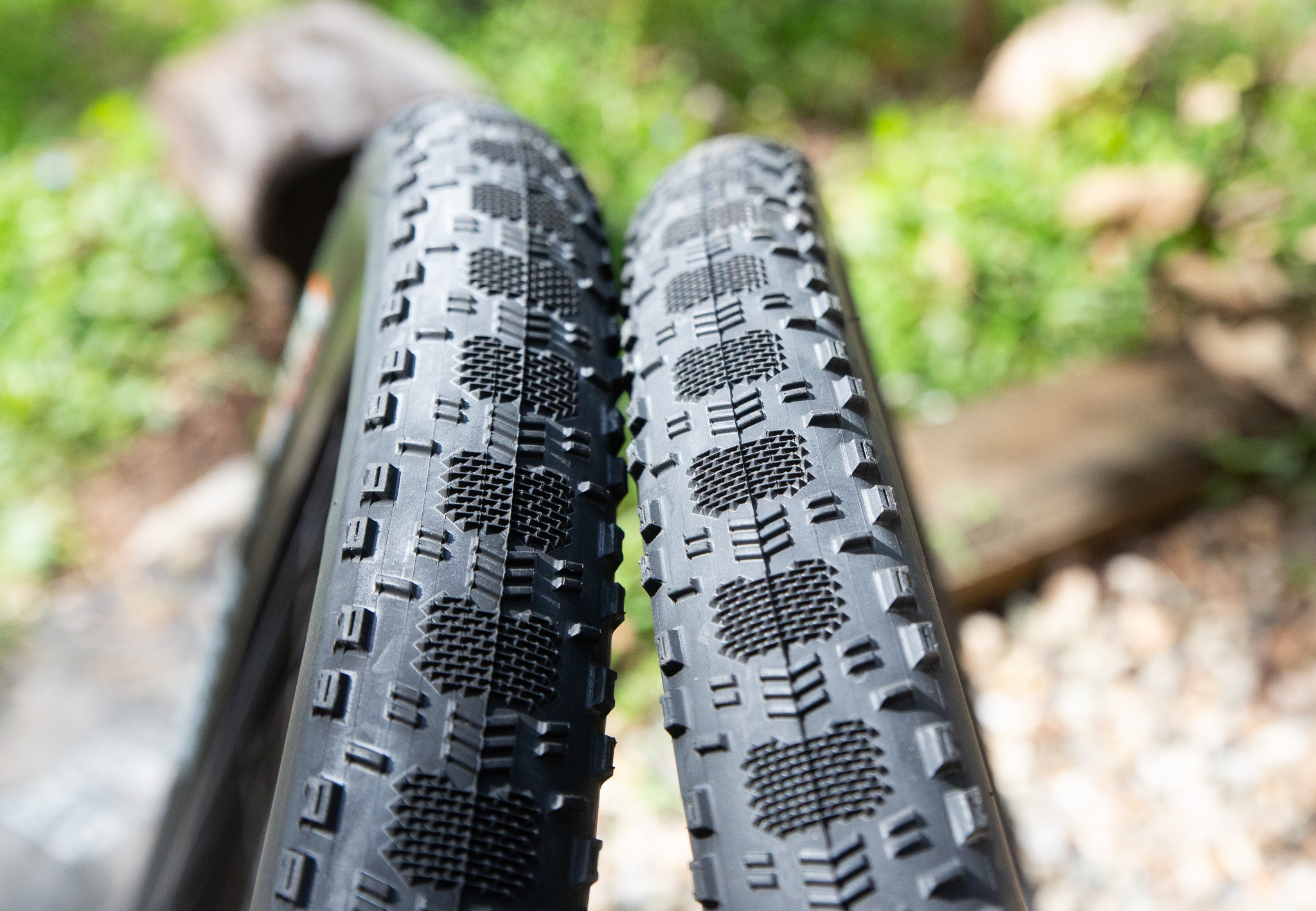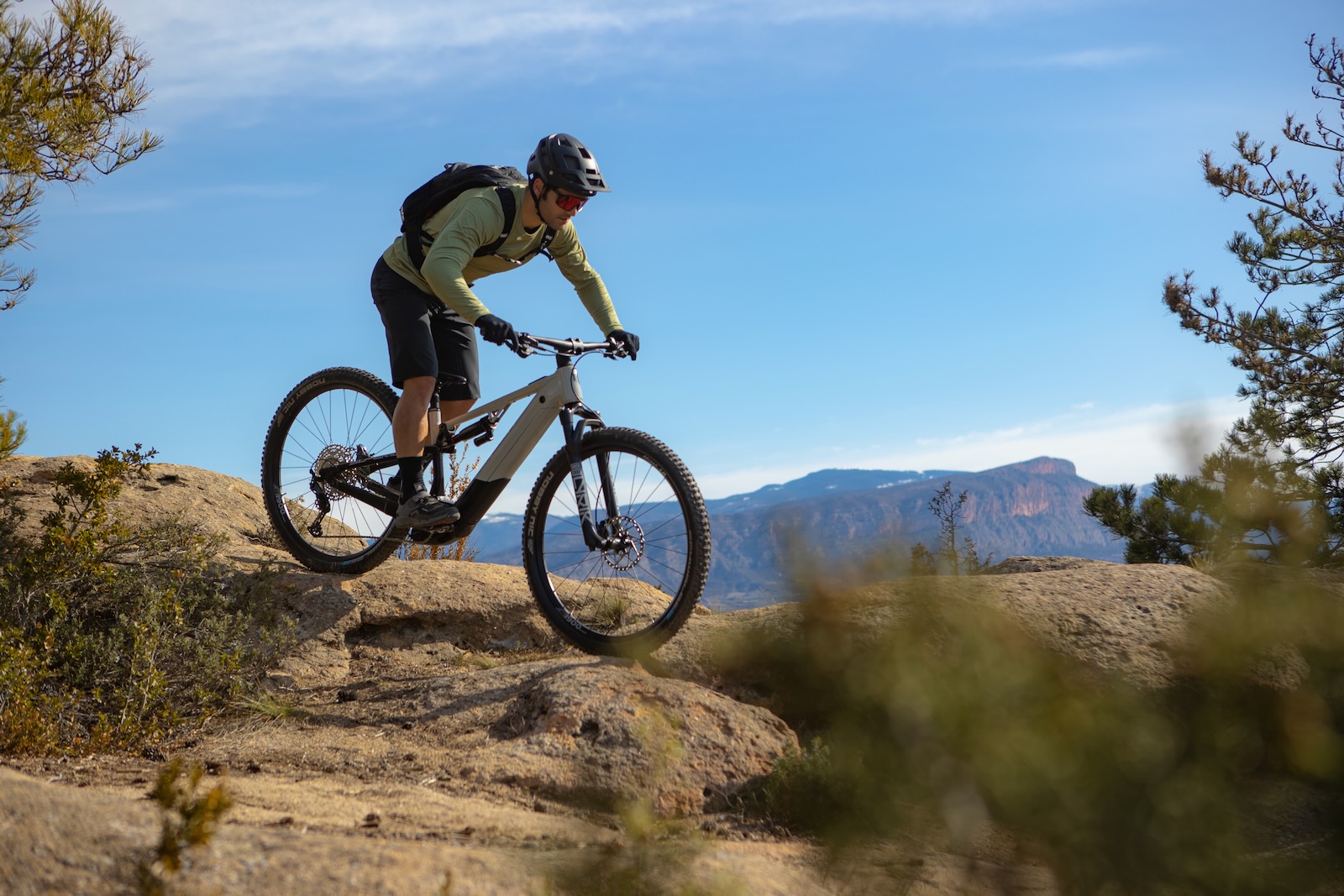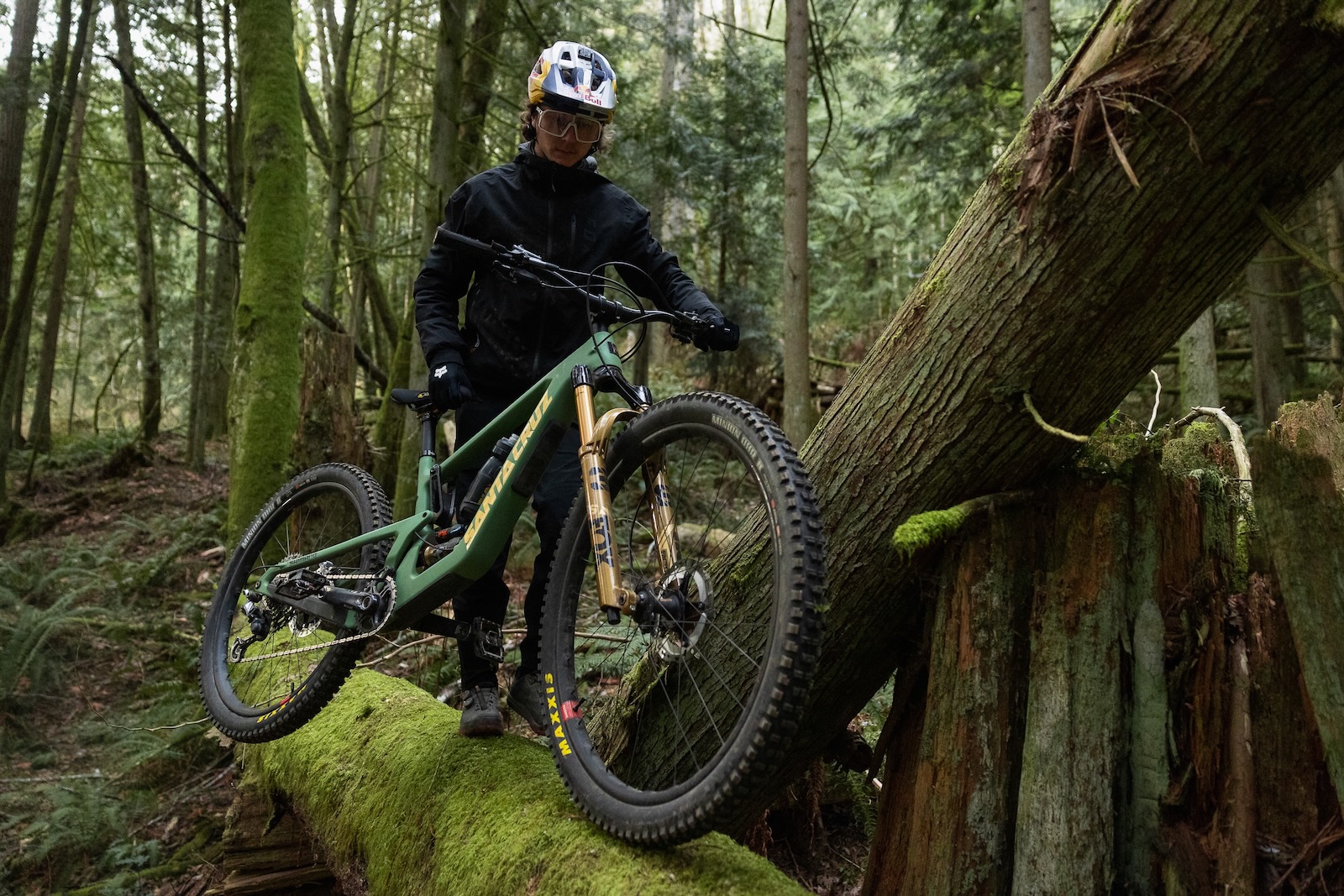TESTED: GT Helion Carbon Pro
The re-birth of XC - what sort of a claim is that? GT make that claim with the GT Helion, and Wil Barrett was happy to put it to the test.
As one of the biggest names in mountain biking, GT Bicycles is a brand that needs no introduction. So I’m not going to give them one. Instead, let’s get straight to the bike.
The Helion is a completely new 110mm travel dual suspension rocket that GT released in June last year. It might seem like a big call to make, but GT refer to the Helion as no less than “The Rebirth of XC”. While their competitors may disagree, that claim is certainly appropriate within GT’s own product line. The Helion represents a dramatic departure from their previous XC full suspension bike, the Zaskar 100.
Two years ago, after a long period of stagnation, GT unveiled an all-new AOS suspension platform to replace the outdated I-Drive design. The AOS platform was first debuted on the redesigned Sensor and Force trail bikes. As part of the global media launch, the company also rolled out a trendy hashtag titled #TheNewGT. But before passing it off as a stooge by their marketing department, bear in mind that things have changed a lot for GT in recent years to warrant such a grand statement.
After signing on Atherton Racing, they’re now a regular sight at the top of the podium on the World Cup Downhill circuit, and they’ve also invested heavily into the Enduro World Series. As for the product itself, GT have revamped their entire product line over the last two seasons, which started with the new Sensor and Force, and has carried through to the Fury downhill bike, the Sanction Enduro weapon, and now the Helion.
With all of these models, GT have made a firm commitment to 27.5” wheels. Along with the AOS platform, they’ve also introduced the “Centered On Rider” principle, or COR for short. It’s pretty straightforward, but the COR principle simply involves identifying the type of rider that they’re targeting, and then focusing the bikes geometry and build kit towards that rider.
In the case of the Helion, GT didn’t want to appeal to riders who are obsessed with Lycra and recovery drinks. Instead, they wanted to build an XC bike that had a focus on fun. As such, the Helion features “progressive geometry to give you nimble, smile-jerking control without losing efficient pedaling expected of a short travel bike”.
In that sense, the Helion certainly straddles an intriguing line between dedicated 100mm travel XC race bikes such as the Giant Anthem, and 120mm travel trail bikes like the Trek Fuel EX. But is it really (as GT claims) the “Rebirth of XC”?
Initial Impressions
GT has never been a company to offer a traditional looking bike, and the Helion is no exception. The heart of the Helion is the AOS suspension platform, with the full carbon fibre frameset forming the exoskeleton that flows and molds its way around the Fox FLOAT shock.
Although it might look complex, AOS is actually a single pivot design, and it features no more pivots than a Specialized FSR. Standing for Angle Optimised Suspension, AOS relies on a super high main pivot, which in the case of the Helion sits nearly 50mm higher up than the old Zaskar 100. This allows the rear wheel to travel in a rearwards fashion on the type of square-edge hits you’d typically encounter through a high-speed rock garden or up a root-laden climb.
To counteract the dramatic chain stretch that would normally occur with such a rearward axle path, GT built the ingenious Pathlink. This hollow linkage is welded together from two halves of forged aluminum, and it houses the bottom bracket shell. This allows the cranks to ‘float’ between the front and rear triangles. As the suspension compresses, the Pathlink drives the rear shock, while the bottom bracket rotates backwards with the rear wheel to reduce chain growth. There’s still a little bit there as GT wanted some anti-squat built into the design for snappy pedaling, but the emphasis has been on eliminating any annoying chain tug through the pedals when pounding the rough stuff.
Being a modern XC bike, the Helion frameset is equipped accordingly. There’s a ZeroStack tapered headtube, direct mount derailleurs, and a 12mm rear thru-axle. To keep frame weight down to a claimed 2241 grams (medium w/out shock), GT have developed an expanding collet pivot system called LOCKR that negates the need for additional pinch bolts.
Less obvious details include a hidden mudguard to protect the rear shock, an integrated sag guide, and neat alloy clamps for the cable guides. There are a few clues in the Helion Carbon Pro’s spec list that hint towards the type of riding that GT have designed it for. 180mm disc brake rotors, an e.thirteen chain guide, and 740mm wide bars all point towards trail ripping fun.
On The Trail
Highlighting GT’s longstanding experience, the Helion is one of those bikes that immediately feels comfortable to ride. The riding position is that of a long and low XC bike, but with an added twist of stability. GT have deliberately stretched out the top tube lengths across the Helion size range for better compatibility with modern cockpits. In the case of the Medium, that means you’re looking at a 60.6cm effective top tube length. Combined with an 80mm stem and 740mm wide handlebars, the roomy cockpit on the Helion offers an efficient riding position that still delivers high-speed control.
A large part of the Helion’s handling can be attributed to the bikes bottom bracket height and low centre of gravity. Unsagged, the BB sits a full inch lower than the hub axle line, so once you’re on the bike and further into the travel, the Helion hugs the ground like a dirt crawler. The AOS platform also places much of the suspension mass directly over the BB, making the Helion incredibly well balanced front to rear. Throw in those short chainstays, and the Helion feels more akin to a slalom bike through the turns than a carbon fibre XC racer.
The Helion has a sporty feel to its 110mm of travel, with decent response under power. Where the AOS design really comes into its own however, is during high speed compressions on rocky ledges, where the high main pivot allows the rear wheel to quickly get out of the way. This allows the Helion to maintain momentum when the trail gets rough and rowdy, lending it far greater composure than comparable XC bikes.
But just like an overweight daschund, the Helion’s low-to-the-ground stability does come at the expense of the occasional belly scrape on the trail. I found myself clipping pedals far more than usual, and I even gave the Pathlink a few good whacks on some unsuspecting rocks imbedded in the trail surface. As such, shock setup is crucial on the Helion, and running closer to 25% sag helps to keep the bike sitting higher in its travel.
The stiff carbon frameset delivers great responsiveness from the handlebar grips through to the rear wheel, and the Helion stands head and shoulders above the typical flexiness that you’d expect from bikes in this class. This characteristic was made even more apparent by the No Tubes Crest rims and lightweight Continental tyres. While they do give the bike great zip under acceleration, the wheels tend to wiggle when loaded up in the kind of hectic high-speed situations that the Helion is so capable of getting you into. However, while it didn’t take much for the X-King rubber to break loose, the rigid chassis and balanced geometry makes it easy to control the drift before snapping back into line.
As a bike that’s built with modern geometry, GT ensured that the Helion was built with equally modern components. The 1×10 drivetrain is a fantastic choice, with the XT setup firing off shifts smoothly and quietly thanks to the clutch rear derailleur. I did test the e.thirteen 42t EX Cog that comes supplied in the box, and while I enjoyed the extra pulling power for the climbs, I found it to detract from the shift quality, and particularly at the other end of the cassette thanks to the missing 17t cog. I also found that the XCX+ chainguide was not only unnecessary, it also added a considerable deal of chain noise. With it removed, I had no issues with the chain coming off the RaceFace chainring, and the bike was a lot quieter as a result.
It must be said that the contact points on the Helion are well dialed. The thin GT Lock-on grips have a nice soft compound, and feature neat integrated alloy end caps. While the previous Tundra saddle was renowned for being a widow maker, Fizik’s 2nd generation version is more comfortable, and the flat profile offers a great platform for climbing.
Otherwise I had very few complaints with the Helion Carbon Pro build kit, as it’s all top-notch stuff. The Fox suspension is easy to setup and the fork and shock worked together in harmony. However, I’m not a big fan of remote lockouts, and especially dual remote lockouts that take away independent control of the fork and shock. Leave them both wide open in the Descend mode, and enjoy the gobs of traction on tap.
Our Take
As a carbon fibre XC bike equipped with 110mm of travel, the Helion is a helluva lot of fun to ride. It corners like a demon possessed, and it delivers a sporty ride quality that just begs you to chase down your mates on much longer travel rigs. Only the tyres and rims will hold you back when things get gnarly, so it may be worth factoring in some beefier wheels and rubber if you want to get the most out of the stout chassis.
Aggressive riding or otherwise, the Helion is also gagging for a dropper seatpost. It pedals well enough and it’s certainly no slouch on the climbs, but this bike is just too fun to consider an exclusive XC bike. Fitting a dropper will help you unlock its true cornering potential.
But while the build kit isn’t perfect, GT have done well to dial in the cockpit setup and fit quality components such as the DT Swiss hubs and RaceFace Turbine cranks. The Helion Carbon Pro is also really well priced, and especially when you factor in that many of the Helion’s competitors run an alloy subframe to save on costs.
As it stands, the Helion’s COR principle has resulted in a thoroughly modern cockpit that’s complete with new-school geometry for confident high-speed shredding. Combined with the AOS suspension design and stout chassis, GT’s claim of the Helion being the “Rebirth of XC” isn’t so bold after all. In fact, it’s right on the money.
Three things you liked about the bike:
1. Modern cockpit setup
2. Low centre of gravity
3. Ability to gobble up square-edge hits
Three things you would change about the bike:
1. It’s gagging for a dropper post
2. Fit a meatier front tyre
3. Ditch the remote lockout
RRP: $5299
Weight: 11.6kg (as tested)
Distributor: Monza Imports







